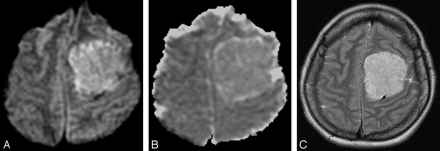Diagnosing Meningioma

A meningioma is generally a tumor that forms inside the skull and membranes that cover it
Specifically, the meningioma forms within the three layers called the meninges, the pericardium, and the hypochondrium. These tumors can be very slow-growing, with about 90% being noncancerous (not malignant). Most cases are fatal when left unchecked. However, it can be cured if it is detected early enough.
Meningiomas occur more frequently in people with a family history of them. This is because the immune system attacks the maningrotes in these people, and some of them may not be able to fight off the invader. Other people who seem more likely to have meningiomas are those who have had surgery for cancer, men with a history of bladder cancer, and people who have a weak immune system. Although these factors are not the only ones that lead to the occurrence of this condition, they can increase the odds significantly.
Meningiomas often spread from one part of the brain or spinal cord to another. They do so in two ways: via a blood vessel, and via an organ such as the bone or the lymphatic system. Sometimes they do not spread, but instead lie in the same place. This means they are not dangerous. But when they do spread they cause symptoms of pain and swelling. They can also cause weakness in the body.
Meningiomas are extremely difficult to detect, especially if the symptoms appear suddenly and are similar to other cancers. Because of this, early diagnosis is very important. Even if the symptoms are not life-threatening, they are still very serious and require immediate medical attention.
The earlier the diagnosis is made, the better for doctors with meningioma cases. This is because treatment options and methods differ greatly based on the stage of the disease. Sometimes, the only option available is surgery. Other times, radiation therapy, chemotherapy, or some combination of both, may be needed to treat it.
Meningiomas are sometimes difficult to detect due to their appearance. They are small and round, and look like cauliflower ears or pimples. They are most commonly found in the cranial cavity, but can grow in other places, such as the neck or head. even the ear canal. They often have very little, if any, tumor.

Sometimes, an early stage of meningiomas will never become apparent unless there are symptoms, so it is important to be seen by a doctor as soon as possible. The earlier the diagnosis is made, the better. The earlier the treatment options are chosen, the better for the patient. Doctors are usually careful to watch for what symptoms to look for, and keep a close eye on any changes in the person's symptoms. A doctor's primary aim is to remove the tumor before it spreads to other areas of the body.
Fortunately, there is no cure for meningiomas
Treatment is only aimed at reducing the damage caused, while trying to prevent it from growing again. The sooner the condition is treated, the faster the recovery will be.
There are many treatment options available, depending on the stage of the disease, which are usually divided into four stages. Stage I is the least severe and involves removal of the primary tumor. Stage II consists of removing any new tumor, if it has developed.
Stage III and Stage IV are known as chronic myeloid (CML) tumors and involve the growth of bone marrow. These are the most difficult to treat, since they have a tendency to spread and regenerate. They are usually removed surgically with the use of a laser, chemotherapy, or both.
In meningioma stage four, the tumor that has already spread into the brain, spinal cord, or central nervous system has not yet reached an advanced point where it is no longer a threat to life. If treatment does not stop it from spreading, the treatment option is to remove it entirely, by surgery or by radiation therapy. If the disease is left untreated, it may spread to other areas of the body and cause death. If not caught quickly enough, it may spread to the bones and organs.
There is no known cause or cure for meningioma causes. It is known to occur in people who have a genetic predisposition to it, as well as people who smoke and have a history of head injuries.